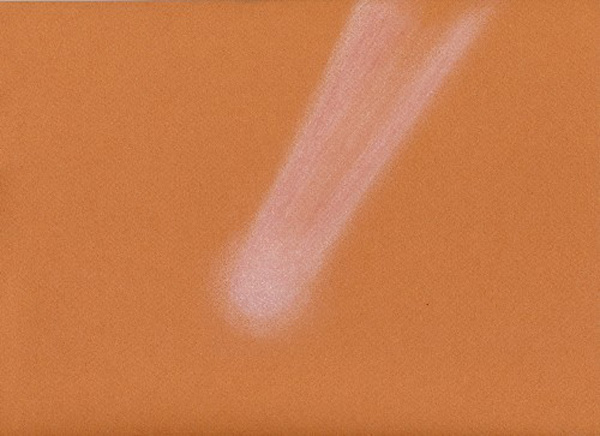Comet C/2006 P1 (McNaught)
10 January 2007 2255 UT
10×50 Binoculars
Cold Knob, WV USA
Altitude: ~3°
Conte’ Crayon on textured pastel paper
For me, getting a look at the famous Comet McNaught was not easy. I had tried and failed two days earlier at sunset when trees and houses blocked the view and it was rapidly sinking lower each evening–in a couple more days it would be gone for observers in the Northern Hemisphere.
Determined to see this comet before it disappeared, I trekked to the top of a nearby mountain to get a clear view of the western horizon and set up my binoculars. It had snowed 6 inches the night before, but now it was clear. Before the end of civil twilight, the comet popped into view. As the orange winter twilight progressed, McNaught took on the appearance of a burning ember just above the horizon.
The sketch is taken from a graphite pencil sketch I did in the field. The most notable features at 10x were the bifurcated tail extending about 30 arcminutes to the northeast and the very bright coma. The comet against the orange background of sunset was unforgettable. I have seen many images of McNaught in magazines and online that were taken on the evening of January 10th and they all show that orange winter sunset.
Of course, Comet McNaught went on south to become the brightest comet in 41 years, visible during daylight, and with a tail so long that it extended back to the northern hemisphere. But I saw it before it became famous.
Michael Rosolina


Great sketch and description helps with the learning of the terminology. Thanks for the sharing!!
This is one of the finest comet sketches I have ever seen.